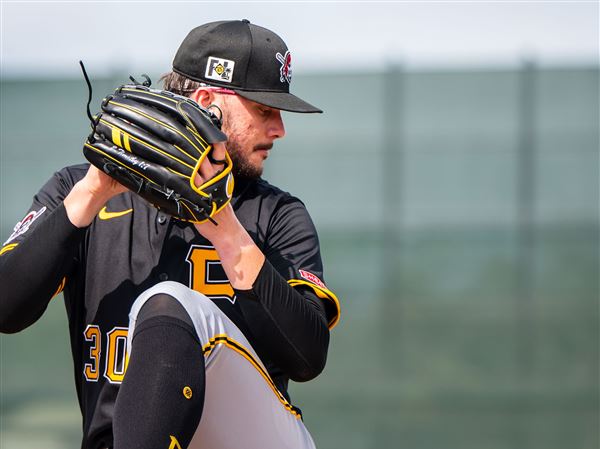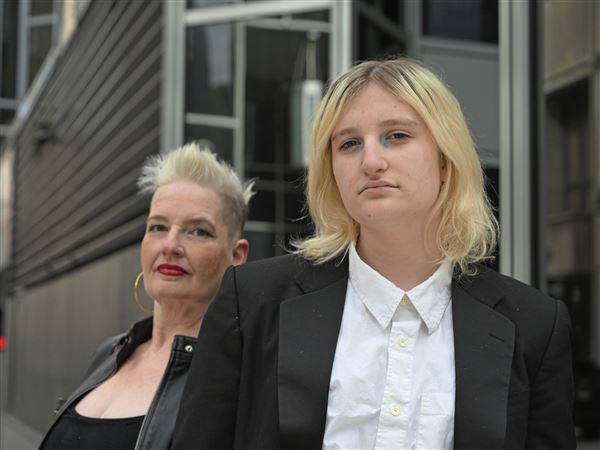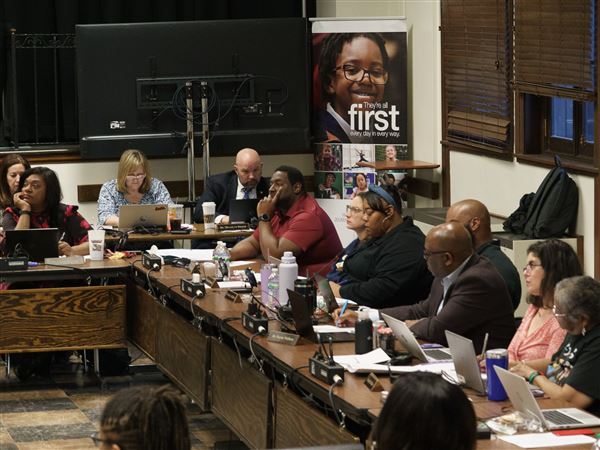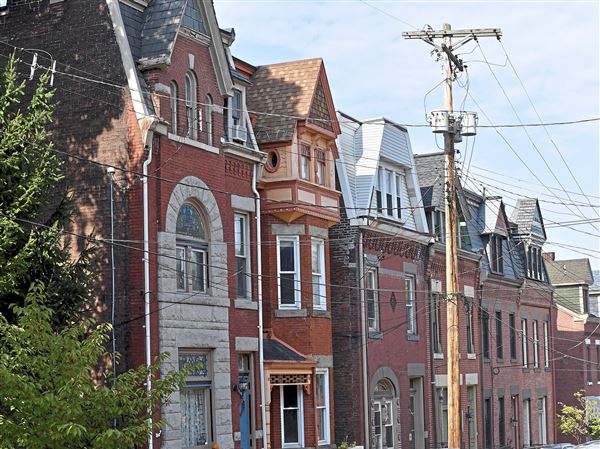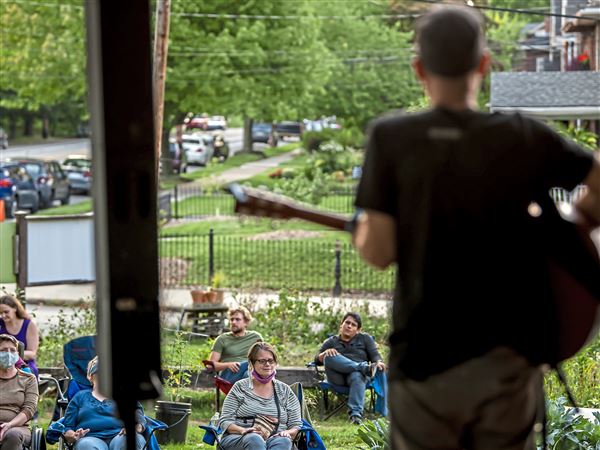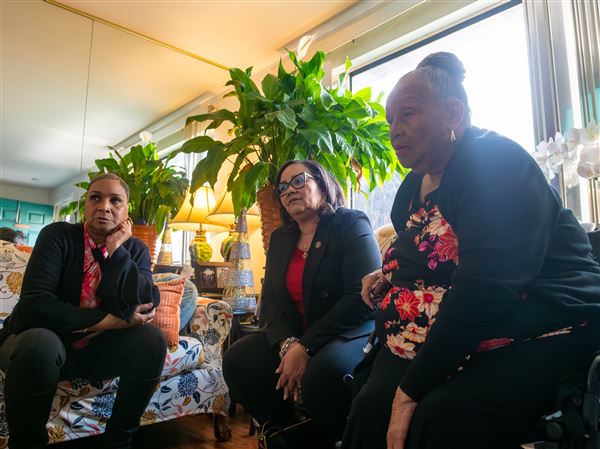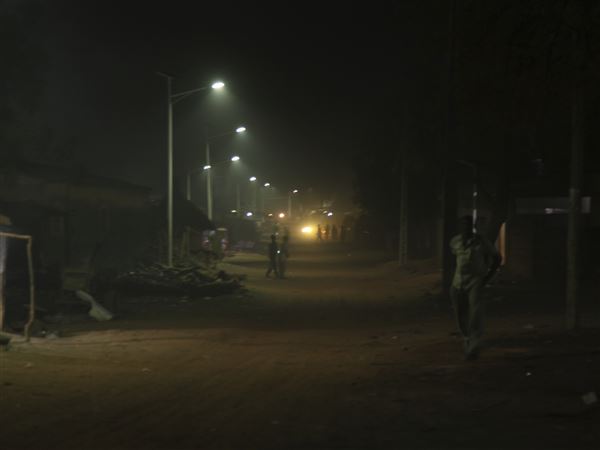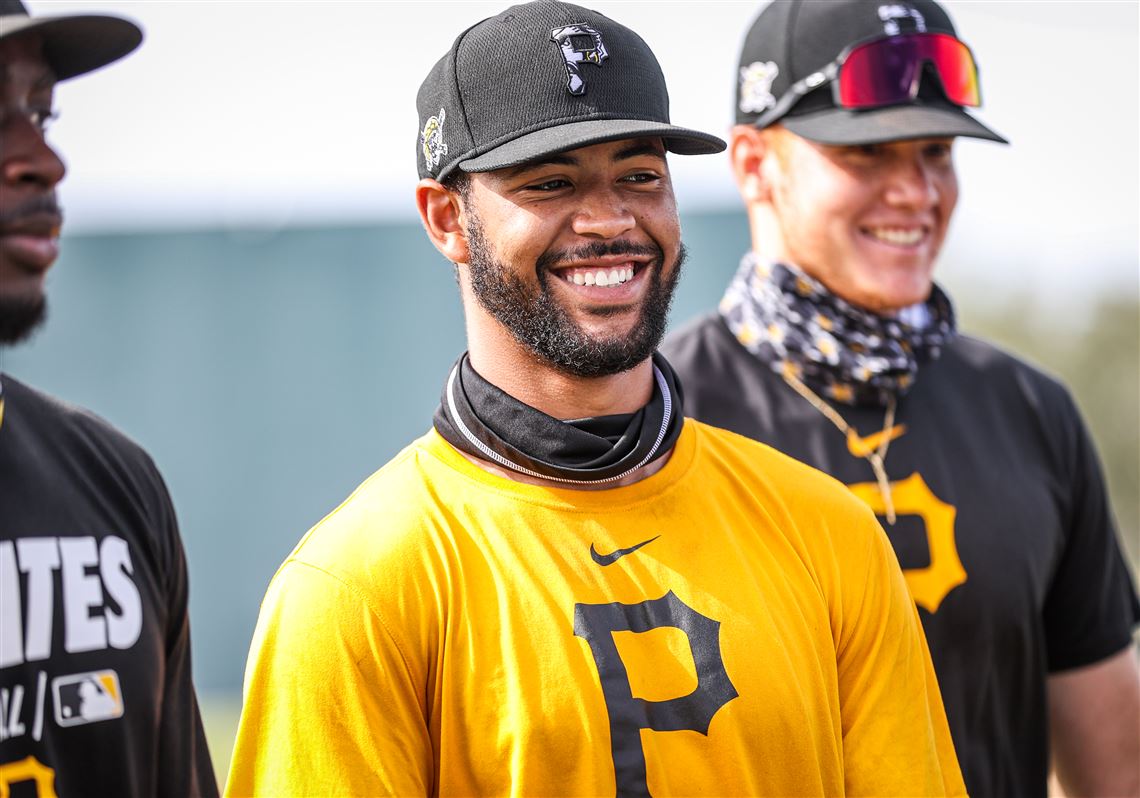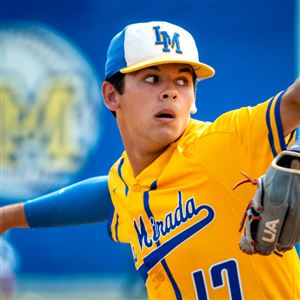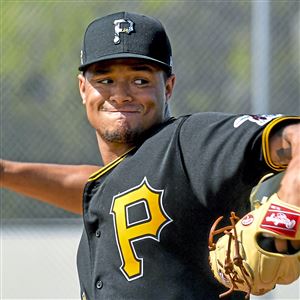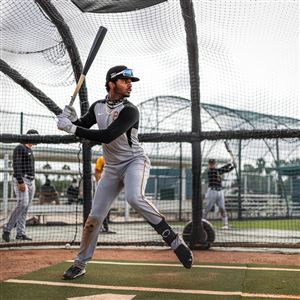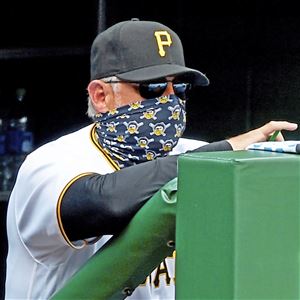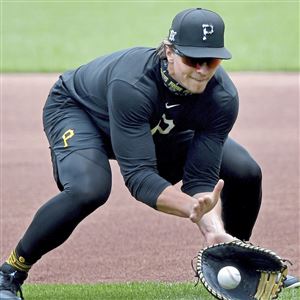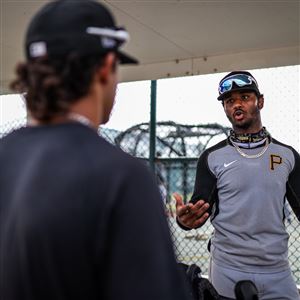BRADENTON, Fla. — When Brennan Malone was in high school, one of his current teammates, Quinn Priester, provided competition. Two of the best prep pitchers in the 2019 draft class, Malone said he was keenly aware of Priester — and vice-versa — from their time spent at various national showcases.
“It was always a little battle,” Malone said.
Fast-forward a few years, and there’s still a battle brewing, although the motivation has changed. Instead of competing against each other for wins or attention, their shared status as key pieces of the Pirates’ future starting rotation has been enough to provide a constant jolt of energy.
“Having those dudes next to you working just as hard as you, wanting the same things, it’s exciting,” Malone said, citing Priester, Tahnaj Thomas, J.C. Flowers and others. “Everybody’s end goal is to be a World Series champion, I’m working next to some really good pitchers. It fires you up.”
The Pirates should be fired up about Malone — and they are — because he, too, is a really good pitcher. One of the best in their system. In fact, Malone might be flat-out dominant in a couple years, as he has a fastball that Baseball America believes could eventually touch triple digits.
“Malone put himself at the top of the high school pitching class thanks to an excellent package of starter traits, premium stuff and projection for more down the line,” reads his Baseball America pre-draft bio. (Malone was considered the magazine’s fourth-best prep prospect in the draft.)
“His fastball is among the best in the class, touching 97 mph and sitting in the low to mid-90s in short stints this summer. His quick and loose arm action, combined with a terrific frame, lead scouts to believe he will touch 100 mph at some point.”
The crazy part about Malone is that it almost seems like he’s been overlooked during his short time with the Pirates. Perhaps it was the fact that shortstop Liover Peguero (No. 5), the other piece acquired in the Starling Marte deal, has been slotted two spots higher by MLB Pipeline.
Or the fact that Malone (No. 7) has thrown just eight professional innings, although he has struck out eight and held batters to a .148 average. (As a senior at IMG Academy in Bradenton, Fla., Malone went 11-0 with a 0.27 ERA, 69 strikeouts and 14 walks in 51 innings.)
But regardless of how much he’s pitched at the pro level thus far, we’re talking about someone who’s the definition of a power pitcher, a 6-foot-4, 215-pounder who throws hard and possesses a terrific slider with a curveball and changeup that have both been “encouraging” during instructional league work at Pirate City.
“He’s really exciting,” general manager Ben Cherington said last week. “He’s physical. He’s athletic. He can do a lot with the fastball. We’re seeing encouraging signs this camp with his curveball and changeup. We know he’s going to throw hard. Now that he’s deeper into his routine, we’re kind of seeing the pitcher that we thought we were trading for. It’s exciting.”
If it seems like Malone got a little bit of a late start, that’s not terribly uncommon when you peel back the layers of his backstory.
Malone actually endured a fairly serious arm injury in middle school, breaking the growth plate in his throwing shoulder and damaging his rotator cuff. The injury, which Malone said stemmed from “an overuse issue when I was a little bit younger,” cost him about a year of time, although he did not have to have surgery.
The rehab process actually strengthened his arm, Malone said, and he saw his velocity tick up from around 75 mph in seventh grade to 89 in eighth. By ninth grade, he was throwing 92 mph.
“I went to physical therapy for at least a couple months,” Malone said. “They did a lot of rotator cuff strengthening exercises and mobility, strengthening it. That’s all I did every day after school.
“After that I think I just got a lot stronger than all the other kids. I came back throwing harder because the rehab and all the stuff.”
Now, it’s about throwing smarter. During instructional league, the focus for Malone has been improving his fastball command, specifically by staying in his back leg a little longer to sync with his right arm and allow it to get out front.
It has also been important for Malone to be around Pirates coaches after he spent much of the season training back home in Charlotte, N.C., and not at the team’s alternate training site in Altoona.
“My time here has been limited, but I feel like the little tweaks and adjustments they’re giving me right now are definitely playing,” Malone said. “They’re making me a better pitcher. They’ve made tremendous strides in my development and the consistency of all my pitches.”
It should be fun to watch Malone once minor league baseball (hopefully) resumes in 2021. Although he’s pretty easygoing off the mound, Malone is the exact opposite once he takes the ball.
On days he pitches, he prefers to be left alone with his thoughts, the pitcher allowed to do nothing but focus on that particular start. Malone calls it “a mental thing,” which is what he says he likes most about pitching — the mind games he gets to play with hitters.
“Off the mound, I’m a more personable guy,” Malone said. “But when I’m on the mound, I get intense. I don’t really like to be talked to on game days. I just like to be locked in the whole day.”
As for a particular style, that also matches what Priester tries to do — power. Whereas the Pirates previously had a reputation for pitching to contact, Malone, Priester and the presumptive No. 1 pick in 2021, Vanderbilt’s Kumar Rocker, are definitely the opposite of that.
“I’m more of a power, in-the-zone kind of guy,” Malone said. “I’m going to come at you with my best stuff.”
Jason Mackey: jmackey@post-gazette.com and Twitter @JMackeyPG.
First Published: October 29, 2020, 3:43 p.m.
